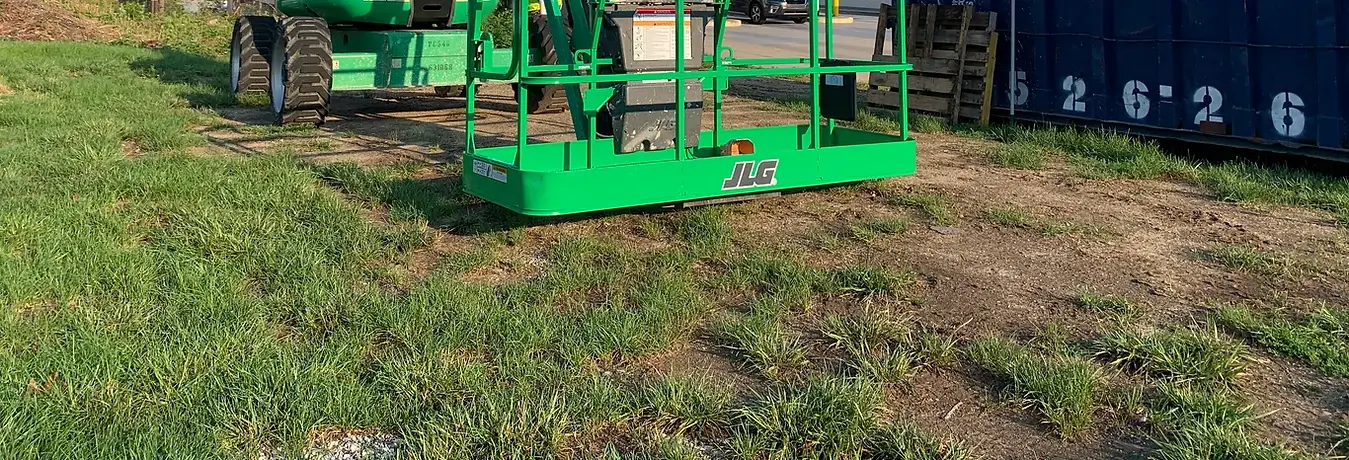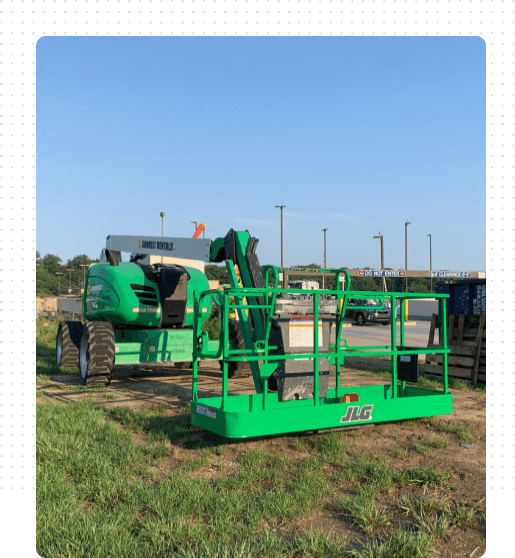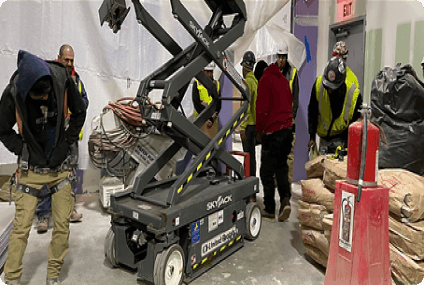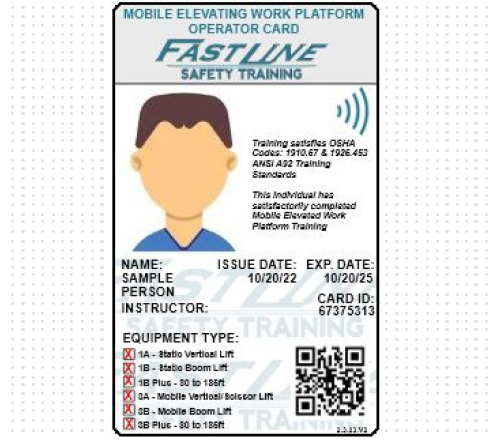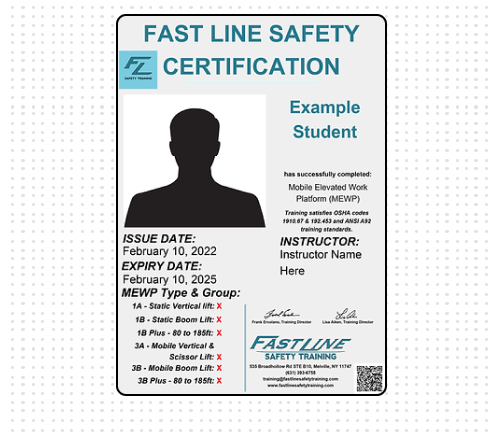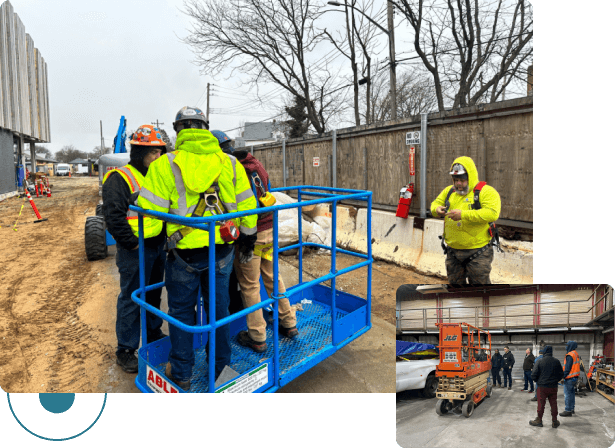
Additional Details
Scissor and Boom Lift Training
Our Mobile Elevating Work Platform (M.E.W.P.) course curriculum combines a plethora of training, such as formal instruction, practical training and learning, and assessing the operator’s performance in the workplace and with equipment. Under the ANSI A92 standards, MEWPs are classified differently and are divided into the following groups:
Group A for those with platforms that move vertically but stay inside the tipping line.
– Group B for all other MEWPs – typically, boom-type equipment where the platform extends past the tipping line.

